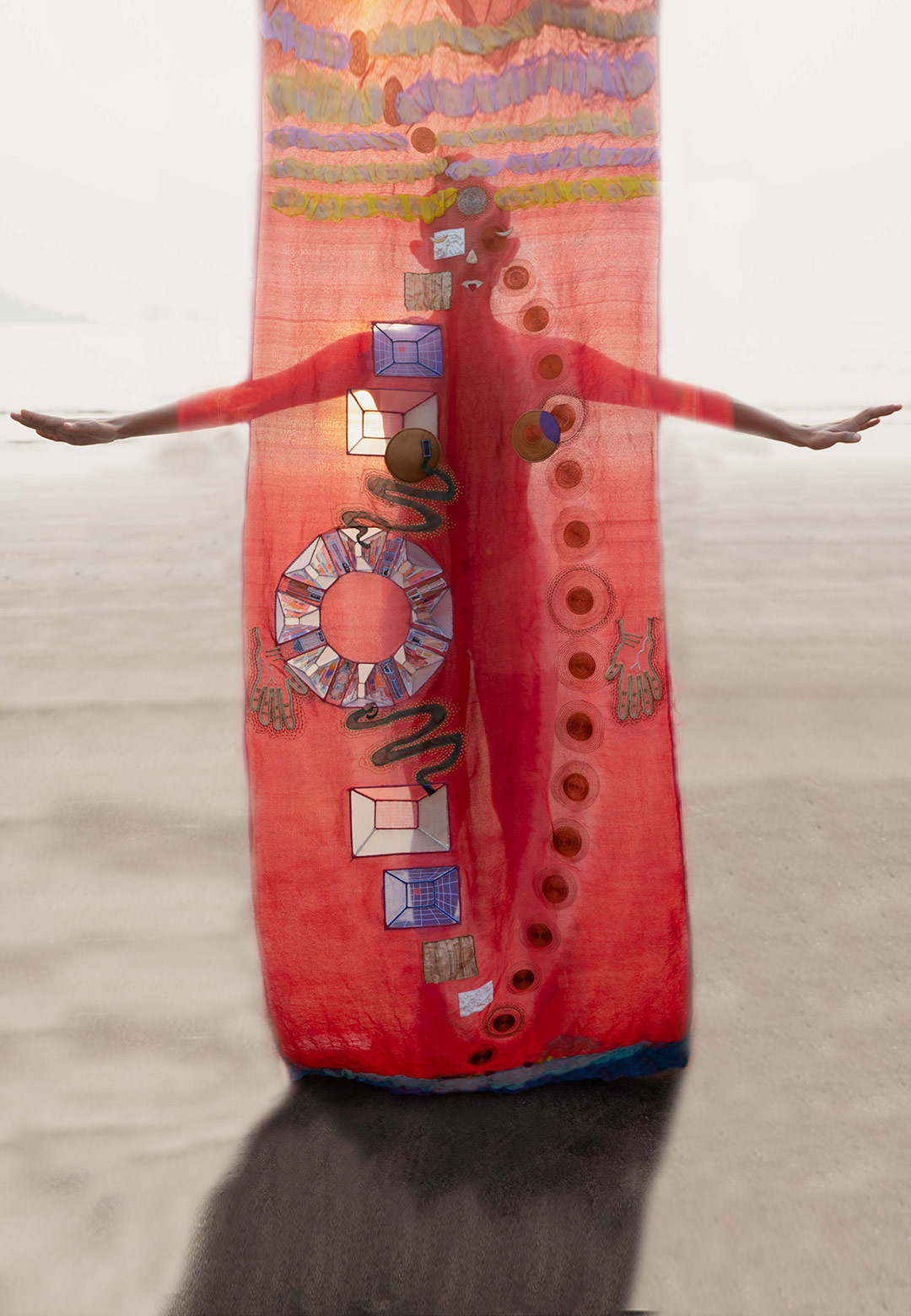Dubbed ‘performative furniture pieces’ by Swati Jain, lead designer of the transdisciplinary studio unown space, the artefacts that make up Transcendental Phenomenology are sculptural, a bit strange, and incredibly playful. Each piece in the collection—which includes a table, a tapestry, a bookshelf, a chair and a lamp—is meant to be multi-sensory, Jain states. With a focus on the ritualistic aspects of movement, the collection draws on phenomenological theory, creating a link between how each piece mediates relationships between the body, the object and the world. Springs, coils, sprockets and even natural light and air activate each piece in their own turn, bringing them alive and giving a new dimension to what could constitute furniture design.
The Indian architectural designer explains how she drew inspiration from classical Indian ragas/ rasas (liminal moods) with different parts of the pieces, enabling varied elemental embodiments through active use of light or the sense of smell. What’s perhaps most striking about the collection, is that to illustrate these performative aspects and the unique design of each piece, unown space created a film that underscores an almost mystical quality, inspired by Yasujirō Ozu's work. In the film titled Performing Thresholds, a lone woman in the wilderness plays with the pieces, dislodging a disc here, moving with a leg-shaped table leg in another sequence. It’s an abstract, evocative, and artistic depiction of this liminal connection with the natural environment, that the pieces draw on through their multi-sensory aspects.
In Jain’s words, “They are very much alive in their mobility of being and becoming by dispersing elemental forms to evoke atmospheres that are external to their presence. These objects are meant to be inhabited across multiple layers of time, consciousness, and elemental atmospheres… The design was based on how the body (our senses) interacts with different natural [phenomena] (and their materialities) at different hours of the day. The [five] performative furniture pieces act as thresholds to help us give birth to space, camouflage ourselves, practice silence to gestate thoughts, disintegrate so one can reincarnate a new possibility of the future.”
The collection draws on a Hindu (and non-Western) view of the cosmos through a contemporary understanding of rasas as mentioned by the furniture designer. She explains to STIR, “Much like a musical instrument, the sensory spaces can be rearranged to play a different emotion, a different raga at various intervals of the day. By choreographing and re-choreographing our movement within and beyond these thresholds, one peels away or adds to the narrative [through] different elemental forms of thinking and being. One experiences different ragas, and possibilities of mood. The designed objects call for contemporary forms of ritual, to experience time-based elemental atmospheres of light, camouflage, silence, disintegration and elixir.”
The pieces bring into discussion an interesting form of critique where design is used as an active agent in our interactions with the environment. Take for instance Table on a Walk that embodies different natural elements (fire, water, earth, and smell) through its varying components. These include incense sticks on a wheel that can be attached to a pod included in the table design and lit, four detachable discs as well as detachable bags. The tapestry Light and Body explicitly uses natural light and movement to get activated, with the fabric screen incorporating copper coils embroidered on the fabric that amplify sound when touched. On the other hand, Embodied Silence, a wearable bookshelf design, is meant to “embody silence for the gestation of thought and the dispersal of knowledge,” the New York-based studio shares.
Meanwhile, 'ChAir' integrates air as a material, according to the Indian designer. The chair design's anthropomorphic form incorporates organ-like rubber pods filled with air that are meant to age with time, symbolising decay. And finally, the lamp design named 'Elixir' refracts light, creating a dynamism that is underscored by the other pieces as well.
Apart from the film that sets the product designs apart, there is an almost salvage-like aesthetic to Transcendental Phenomenology, which seems to stem from trying to create this link to the bodily, the natural and the elemental, and the strangeness of it all, in some ways reminiscent of steampunk films. Elaborating on the design process for these sculptural artefacts, Jain mentions conducting design workshops that focused on performance and understanding how to materially depict natural and temporal phenomena. Performance studies helped them “embody the essence of these phenomena in tangible form through bodily gestures,” she says.
Adding a sense of wonder and curiosity to mundane everyday tasks, Jain envisioned the objects as sculptural thresholds, allowing a user to reflect on and imagine different ways of being. By highlighting the ritualistic nature of the everyday, Transcendental Phenomenology is meant to be a meditation on how we interact with the environment. On the other hand, the focus on performance in the collection's design process foregrounds a new way of thinking about design that could serve as a tool for bringing more awareness and consciousness to our actions.






 Sign in with email
Sign in with email








What do you think?